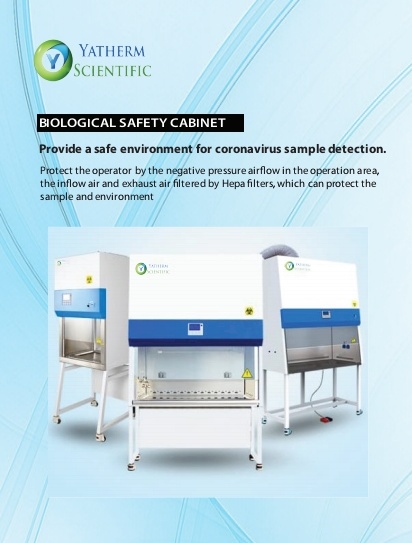Some Guidelines for the Right Use of Biological Safety Cabinet Equipment:
Biological Safety Cabinet (CBS) Use:
One of the most important aspects to maintain both the protection of the surrounding environment, and the operator and to maintain the consistency of the results of the process, is the correct use of the Biological Safety Cabinet (CBS).
A – Plan in detail the work or procedures to be performed.
- Before starting work, the laboratory worker should know what procedures and equipment he will use. You must carry out the coordination that you deem appropriate with your bosses and colleagues so that the work can be carried out with a minimum of interruptions, while the Biological Safety Cabinet is in operation.
B – Start the Biological Safety Cabinet.
The most important activities associated with this stage are:
- Prepare the work area.
- Turn off the UV lamp (if equipped).
- Turn on the fluorescent light.
- Verify that the position of the front window frame is correct (the front opening varies between 18 and 25 cm).
- Verify that the air return grilles (front and rear) are free of obstructions.
- Turn on the Biological Safety Cabinet fan.
- Allow air to flow freely for at least five minutes.
- Check the pressure gauge pressure reading.
- Wash your hands and arms with a germicidal soap.
- Dress in personal protective items (long-sleeved gown, with tight cuffs, rubber gloves; protective glasses and, if appropriate, a protective mask.)
- Spray and scrub all interior surfaces with 70% ethanol or with a suitable disinfectant.
- Allow air circulating inside the cabin to dry surfaces.
C – Load materials and equipment.
- Assemble the work material.
- Insert only the material required to perform the procedure into the biological safety cabinet. Do not overload the cabin.
- Place the material so that dirty and clean materials do not cross, or the front or rear grilles are clogged.
- Place the container (s) for contaminated material on the right rear of the biological safety cabinet. Usually the biosecurity bag, a container with pipette disinfectant and a unit for safe storage of sharp objects are placed there.
- Large objects should not be placed too close together.
D – Develop the procedures.
- Slowly insert your hands into the work area. Perform processes and tasks methodically and carefully, (from clean areas to contaminated areas).
- Avoid techniques or procedures that can alter the air flow patterns inside the cabin.
- Keep all materials, at least 10 cm, within the frame of the front window of the cabin. Carry out all polluting operations towards the bottom of the cabin work area.
- Avoid using open flames. Do not work with lighters inside the biological safety cabinet. The flame they produce breaks the laminar flow pattern (produces turbulence) and can even burn the HEPA filter. Instead, you can work with electric type incinerators.
- Avoid removing hands from the work area until all procedures have been completed and all potentially hazardous (critical) material has been disposed of in appropriate bags or containers.
E – To remove materials and equipment.
- Allow air to flow freely into the cabin without any activity inside.
- Perform a surface decontamination to objects that have been in contact with contaminated material before being removed from the cabin.
- Cover all open trays or containers before being removed from the cabin.
- Remove materials as appropriate (to the incubator, to the biosafety bag, to Autoclave, etc.)
F – Disinfect the Biological Safety Cabinet.
- Spray and scrub all interior surfaces with 70% ethanol or with a disinfectant suitable. Allow the air circulating inside the cabin to dry the interior surfaces.
- Discard gloves; remove personal protection items.
- Wash your hands with soap and plenty of water.
G – Turn off the Biological Safety Cabinet.
- Turn off the fan and fluorescent lamp.
- Close the front opening.
- Turn on the ultraviolet lamp (if any) for a minimum period of 15 minutes.
Each operator of a Biological Safety Cabinet (CBS) must be properly trained and trained in the use of the equipment. Remember that all these collections are not enough without the commitment and applied knowledge of each operator.

